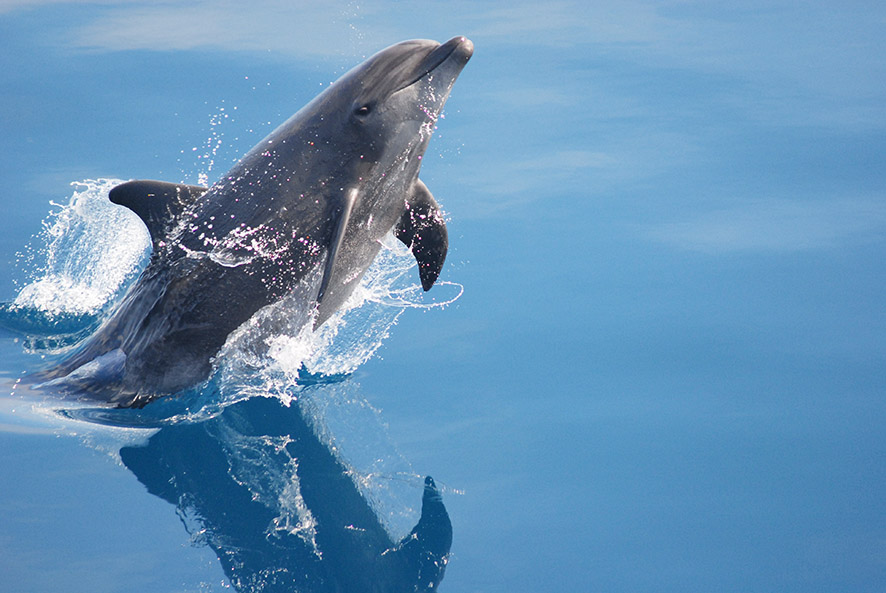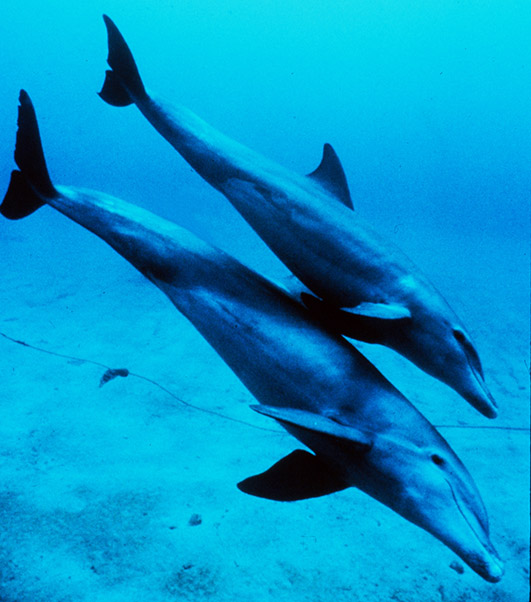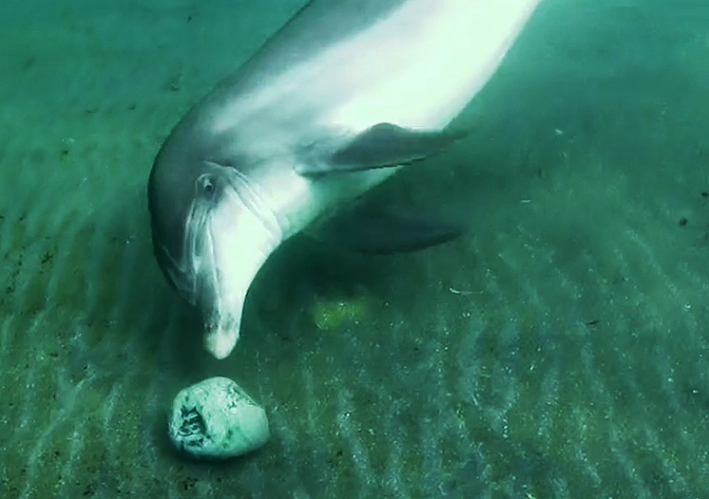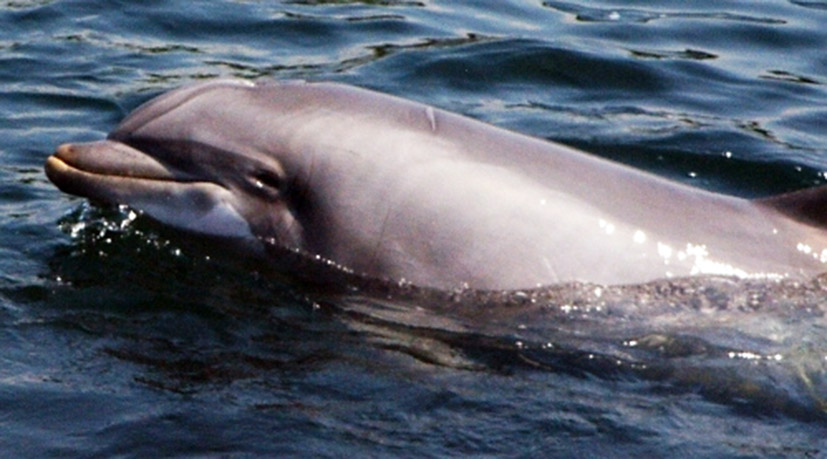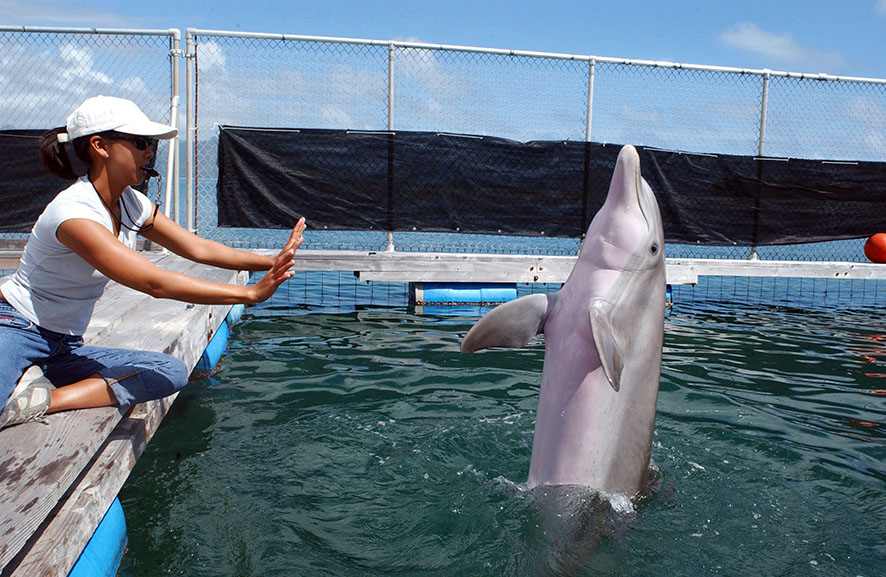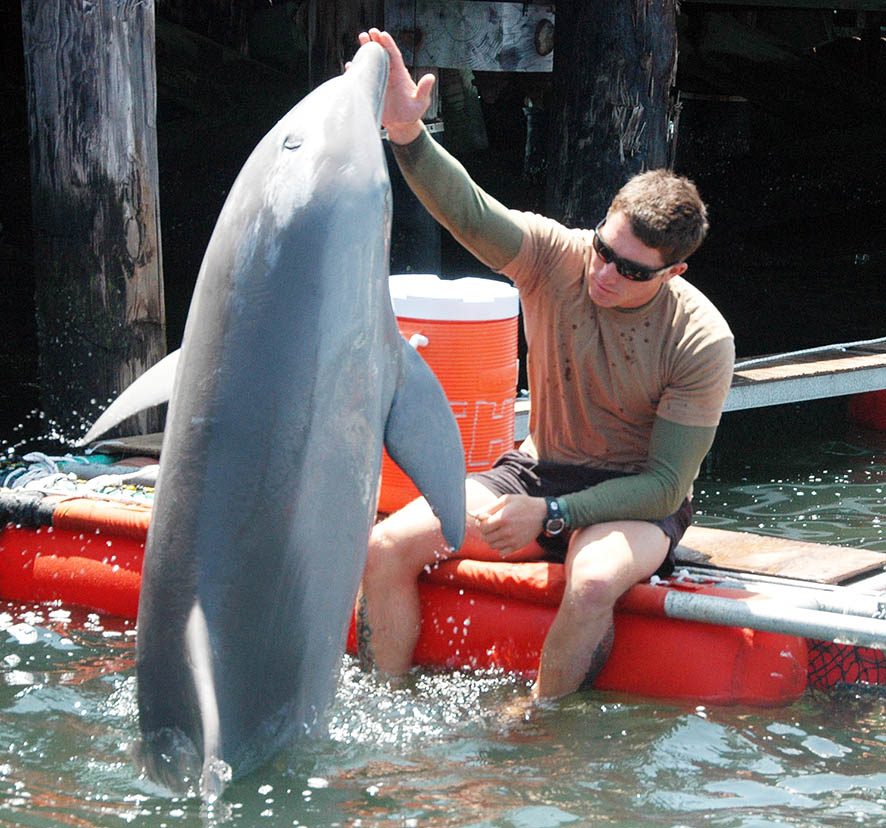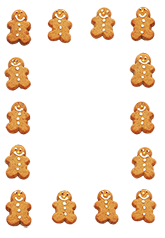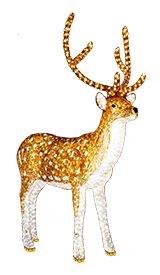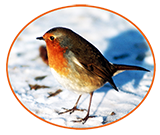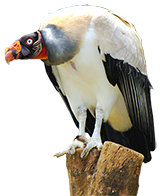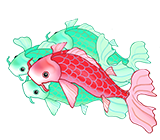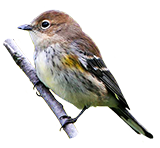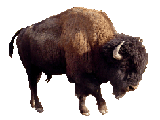Bottlenose Dolphin Facts
This page of bottlenose dolphin facts will tell you some of the most interesting and surprising tidbits of information about the world's most common species of dolphin.
The bottlenose dolphin is the dolphin we are all most used to seeing –
this is the 'Flipper' species of dolphin, the one that is most commonly used on
TV shows and movies and seen performing in aquatic parks.
They are very
intelligent and easy to train, as well as being very cooperative with humans.
Read on to learn some fascinating facts about one of man's best friends in the
animal kingdom.
You will also on this site find a page with Dolphin Facts, Pictures of Dolphins and Dolphin Clipart. These four pages will provide you with all you need about knowledge of dolphins, different types of dolphins, dolphin habitat, endangered dolphins and amazing facts about dolphins.
Here is a small video of little children playing with dolphins:
![]()
The Basic Questions and Answers
Let's start by answering some of the most common questions about
the bottlenose dolphin.
![]() How
long is a bottlenose dolphin?
How
long is a bottlenose dolphin?
Males grow up to 13 feet long, about 4
meters.
![]() How long do they live?
How long do they live?
They can live up to 40 years, but unfortunately most dolphins in the
wild don't live more than 25 of 30 years because of predators like
sharks and human fishermen.
![]() How
heavy are they?
How
heavy are they?
Usually between 440 and 660 pounds (200 and 300
kilograms).
![]() How high can they
jump?
How high can they
jump?
20 feet (6 meters).
![]() How
fast can they swim?
How
fast can they swim?
Top speed for a bottlenose dolphin is about 32
kilometers per hour (about 19 miles an hour).
![]() Are bottlenose dolphins mammals?
Are bottlenose dolphins mammals?
Yes, just like
you and me, dolphins are mammals, which means they feed their young
milk and have to come up to the water's surface to breathe air just
like humans.
![]() What's the
bottlenose dolphin's scientific name?
What's the
bottlenose dolphin's scientific name?
Tursiops truncates.
![]() What is the proper name for a
bottlenose dolphin's nose? A 'beak.'
What is the proper name for a
bottlenose dolphin's nose? A 'beak.'
![]() How long is a bottlenose dolphin's beak? About 3 inches on
average (about 7.5 centimeters).
How long is a bottlenose dolphin's beak? About 3 inches on
average (about 7.5 centimeters).
![]() Why are they called bottlenose dolphins?
Why are they called bottlenose dolphins?
Don't all dolphins have
bottle-like noses?
Nope. Actually, different dolphins have beaks of
all different shapes and sizes. Some are very short and stubby, some
are long and thin, and some dolphins have round heads without much
of a 'beak' at all.
![]()
Bottlenose Dolphin Behavior
It might seem a little strange to call bottlenose dolphins some of our closest friends in the animal kingdom, but there are few other creatures (apart from our direct relatives, the chimpanzees) who behave in ways so similar to human beings.
For example, take the way bottlenose dolphins organize themselves
into social groups.
A group of dolphins is called a pod, and it's
based around family groups.
In the past scientists thought dolphins
stayed in the same pod through their lives, but after tracking
individual dolphins they've discovered this isn't the case.
Some
dolphins will switch between pods throughout their lives.
The whole
idea of the pod is cooperation – many dolphins working together can
catch more fish than one or two dolphins hunting alone.
Most of the time, there's not more than a dozen bottlenoses in a
pod.
But sometimes, two or three pods will join up into a bigger
group to work together – to circle and attack a school of fish, for
example.
So it now appears that bottlenose pods are based on family,
but also on the practical side of having to hunt and catch as much
fish as possible.
Even so, there is evidence that dolphins can have 'friendships' with
each other.
In other words, they can become attached to other
dolphins that they don't have any family connections to.
Dolphins
are seen to show affection by rubbing up against each other and 'playing'
together in their swimming patterns.
These friendships seem to
happen mainly between male and male, and between female and female.
In the dolphin world, there doesn't seem to be anything along the
lines of a 'marriage' between a male and female.
Just like humans, there are leaders and followers in a bottlenose
dolphin group.
Dolphin leaders will even go as far as biting other
dolphins to keep them in line!
There are other similarities in how dolphin groups behave when you compare them to human groups.
For instance, human women often get help from their own mothers when it comes time to have a baby.
In the same way, female dolphins will often seek out their own mothers when they have a calf.
The mothering of calves is a group effort, with a few female dolphins within a pod having the role of looking after the young ones.
Actually the pod is so important for the upbringing of the calves that if single bottlenose dolphins have a calf, the calf will not survive.
This might partly have to do with the fact that bottlenose dolphin males are the only kind of dolphins that kill their own kind - when they want to mate with a female, killing her calf is one of the ways the male gets access to the female.
Apart from that, the big males have the job of looking out for predators and keeping the group safe.
One other very interesting way dolphins behavior like humans is that they
seem to do things 'just for fun.'
Most animals don't – they're too
worried about avoiding getting eaten and finding their own next meal!
But dolphins seem to have a natural tendency to like to play, which
is why they're often spotted swimming along beside boats, leaping
out of the water for no apparent reason, and coming up to swim with
humans.
Bottlenose dolphin playing with a stone for fun
Bottlenose dolphins have also been seen to 'surf,' when they will
swim along with the crest of the wave.
However this is because it's
a lot less tiring for dolphins to let the waves carry them like this,
rather than being for fun. (But once again it shows how clever
dolphins are).
![]()
Bottlenose Dolphin Facts: Bottlenose Communication
That reflected sound wave can tell the dolphin a huge amount of information: where a school of fish is, how many there are, how big they are, how fast they're moving and what direction they're swimming in.
When it comes to the behavior of bottlenose dolphins, the way they
talk to each other is one of the most interesting aspects.
They use
echolocation not only to find their way around, but also to send
messages to other dolphins in their pod.
They can express lots of
different messages to each other: warning that there's a predator
like a shark nearby, asking where other dolphins are, or pointing
out to their friends where food can be found.
It's this highly
advanced communication that lets dolphins work together as such
effective hunters.
One of the most interesting things about echolocation is how the
dolphins actually hear.
In humans, sounds are picked up by tiny
bones inside the ear, which vibrate when sound waves hit them. In
dolphins, it seems that sounds vibrate along their lower jawbone and
up into the ear.
![]()
Dolphin Habitat
Bottlenose dolphins are found in oceans all over the world.
The only
oceans they stay away from are those at the very top and bottom of
the world – the Arctic and Antarctic – because those areas are too
cold.
They usually don't go any further south than the bottom of
South America, and won't go further north than England.
But in between those upper and lower limits, bottlenose dolphins are seen almost everywhere.
They don't stick to the coastline like some
dolphins do, being seen out in the middle of the Pacific and
Atlantic Oceans many miles from land.
That said, scientists do
consider the coastal bottlenoses and the deep sea bottlenoses to be
slightly different creatures. So you can say there are actually two
types of bottlenose dolphin.
Coastal bottlenoses don't move very far
and live most of their lives in a fairly small area of water.
Ocean
bottlenoses on the other hand are known to migrate great distances
and can see a lot of the world's ocean throughout their lives.
Like humans, dolphins don't just rely on one sound for their communication. They can make a variety of sounds, including clicking and whistling. They also use body language to communicate with each other.
Many people don't realize that a lot of human communication actually happens through our body language, facial expressions and voice tone, more so than the words we use – the same is true of dolphins, although not to the same extent as in humans because they rely more on their ears and we rely on our eyes. When it comes to training dolphins in captivity, they are capable of responding both to words and sounds as well as hand signals.
![]()
The Bottlenose Brain
Bottlenose dolphins have very advanced brains.
They have been proven
to be capable of doing many complicated mental tasks that most other
animals can't do.
For example, it has been proven that dolphins have
very advanced memories – although this is difficult to study, as
scientists are still struggling to understand how memory works in
humans. But this extraordinary memory is part of what makes them
such good learners.
Bottlenoses are also capable of recognizing themselves in a mirror.
They even shows signs of being able to learn and communicate with a
very basic made-up language (although they aren't capable of
learning a complicated human language such as English).
![]()
What Do Bottlenose Dolphins Eat?
Bottlenoses eat fish and squid. They also sometimes eat other small marine animals such as crabs and shrimp.
You might be wondering, “How can they eat a crab with a hard shell?” Well, what many people don't realize is that dolphins actually have razor sharp teeth like sharks – but their teeth are a lot smaller than the ones on a Great White.
Dolphins are sometimes referred to as 'whales with teeth,' because
one of the main differences between whales and dolphins is that
whales have a baleen (a kind of filter that picks up tiny organisms
like krill and dolphins have teeth instead.
Although despite this,
dolphins are pretty messy eaters – they usually swallow their food
whole or in large chunks and let them stomachs do the rest of the
work.
There's another fairly unusual fishing technique bottlenose dolphins
sometimes use, where they will slap their tail down onto the water's
surface and stun the fish around them. Once the fish are stunned the
dolphin is then easily able to grab a few of them in its jaws.
In
another variation of this move, the dolphin will use its tail to
actually flick up fish up out of the water.
Here's another interesting fact about bottlenose dolphins: there are
many examples of these dolphins cooperating with fishermen to catch
more fish.
Around Mauritius off the coast of Africa, for example,
bottlenose dolphins are known to drive fish into fishermen's nets on
purpose. They use the nets to force the fish into a smaller area,
then they pick off the fish that manage to escape the nets.
Unfortunately, though, fishing nets are also a big problem for bottlenose dolphins who get caught by fishermen fishing for other marine species.
![]()
Dolphins in Captivity
If you go watch a dolphin performance at an aquatic park like SeaWorld, chances are you'll be seeing a bottlenose dolphin.
Many dolphins seem to adapt to living in captivity well, although some people believe this is bad for them. One person who has criticized the way dolphins are kept in many water parks is Ric O'Barry, the man who trained the dolphins for the first Flipper movie.
On the other hand, many trainers at aquatic parks believe the dolphins are quite happy where they are. Some dolphins seem to enjoy their daily interactions with people and they tend to develop a very close bond with their trainers.
![]()
Bottlenose Dolphin Facts: Dolphins in TV and Movies
Of course, the most famous dolphin character (and the first) ever to
appear on screen was Flipper.
The original Flipper TV show actually
used a number of different bottlenose dolphins to play the same role
(of course, most people can't tell the difference between individual
dolphins, although trainers who hang around dolphins all day learn
to recognize them by their 'faces').
Flipper was filmed in Miami and
first aired in 1964. The original Flipper series ended in 1967, but
some channels still play re-runs of old Flipper episodes even today,
which is just more proof of the appeal of bottlenose dolphins across
generations.
One of the features that has made bottlenose dolphins
so popular is the curve of their mouths, which looks like a 'smile'
to humans.
SeaQuest was another TV show famous for having a dolphin as one of
its star characters – and this dolphin could talk!
On the show the
dolphin was able to communicate with people through a computer that
translated its clicks and noises into English words.
Some people
still think it may some day be possible to do this for real, being
able to 'translate' the huge variety of different sounds a dolphin
can make into words and sentences that a human can understand (although
few serious scientists still take this idea seriously, after most of
the research into it has produced no real results).
![]()
Bottlenose Dolphin Enemies
Because bottlenose dolphins are spread out all over the world, they have a few different predators depending on the region you look at.
In general, there are very few animals in the ocean that are willing
to attack a big pod of dolphins. Even great white sharks, which can
grow much bigger than dolphins, will often avoid a dolphin pod –
dolphins have been known to attack and kill big sharks.
They may
look cute, but dolphins know how to defend themselves when they need
to! Bull sharks and tiger sharks can also be a threat to bottlenose
dolphins.
Killer whales have been known to eat bottlenoses, but this is rare because killer whales tend to stick to the colder regions at the top and bottom of the world, so their territory doesn't overlap much with that of the bottlenose.
Unfortunately, as with so many animals on Earth, the biggest threat to the bottlenose dolphin is humankind itself.
![]()
Bottlenose Dolphins and Humans: The Good Side
Bottlenose dolphins have long been famous for their curiosity about human activity and their willingness to help humans in trouble.
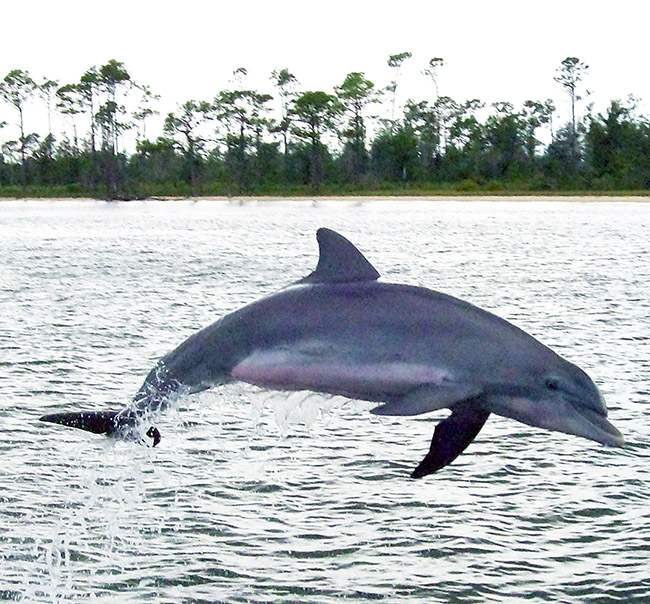 There have been many accounts of the years of dolphins helping
drowning swimmers to stay afloat and make it to shore. (It's
interesting to note that this is the same thing they often do with
other injured or sick dolphins who don't have the strength to reach
the surface to take a breath).
There have been many accounts of the years of dolphins helping
drowning swimmers to stay afloat and make it to shore. (It's
interesting to note that this is the same thing they often do with
other injured or sick dolphins who don't have the strength to reach
the surface to take a breath).
There have even been accounts of dolphin pods fighting off sharks who were trying to attack human swimmers and surfers.
These are very remarkable behaviors that many scientists are at a
loss to explain.
Most theories about animal behavior are based on
the idea that animals usually do things to help themselves or one of
their group members – it's very unusual for a wild animal to help a
stranger it has never met before, especially when that stranger is a
different species!
Aside from these examples of helping people in danger, there are
also many reports of dolphins coming right up to boats and allowing
the humans on board to touch and pet them.
Once again, this is quite
unusual behavior for wild animals. But their motivation for coming
up to fishing boats may not be purely about socializing – dolphins
are also known to follow along after fishing ships in the hopes of
getting an easy meal from anything which is thrown overboard.
Like all wild animals though, dolphins do have times when they are
not friendly towards people.
If they perceive a human to be a threat
to them, they can become aggressive. All wild animals need to be
treated with the respect they deserve – if you see a dolphin in the
wild, never assume it will act like the friendly dolphins you're
used to seeing at amusement parks.
![]()
Bottlenose Dolphin Hybrids
Scientists have discovered that bottlenose dolphins can breed with other species of dolphins to create hybrids, just as different breeds of dog can breed together to create 'designer dogs.'
One of these hybrids is called a 'wolphin.' It's a cross between a false killer whale (a dolphin that looks like a killer whale, but is slightly smaller and has different coloring and markings) and a bottlenose.
Bottlenoses have also been able to breed with Risso's dolphins, Atlantic spotted dolphins and rough-toothed dolphins. There may be many more hybrid dolphins in the wild that are yet to be recorded by researchers.
![]()
More Fun Facts About the Bottlenose Dolphin
Here are a bunch more random and interesting facts about bottlenose dolphins:
![]() Bottlenose dolphins can swim to a depth of around 950 feet
(300 meters) but they usually catch their food close to the surface,
in the 10 to 150 feet range (3 to 45 meters)
Bottlenose dolphins can swim to a depth of around 950 feet
(300 meters) but they usually catch their food close to the surface,
in the 10 to 150 feet range (3 to 45 meters)
![]() The brain of an
average bottlenose dolphin weighs about 3.3 pounds (1.5 kilograms –
about 100 grams more than the average human brain)
The brain of an
average bottlenose dolphin weighs about 3.3 pounds (1.5 kilograms –
about 100 grams more than the average human brain)
![]() Dolphins can
make 1000 echolocation clicks every second
Dolphins can
make 1000 echolocation clicks every second
![]() A baby bottlenose is
usually about 3 feet long when born (almost a meter)
A baby bottlenose is
usually about 3 feet long when born (almost a meter)
![]() Bottlenose
dolphin calves are born tail-first – their head and blowhole comes
out last, so they don't drown
Bottlenose
dolphin calves are born tail-first – their head and blowhole comes
out last, so they don't drown
![]() A bottlenose dolphin's stomach is
divided up into parts, so it can digest food quickly when it needs
energy or store food for later when it has had too much to eat
A bottlenose dolphin's stomach is
divided up into parts, so it can digest food quickly when it needs
energy or store food for later when it has had too much to eat
![]() Bottlenoses living in colder waters have more blubber to keep warm
Bottlenoses living in colder waters have more blubber to keep warm
![]() The spike on a bottlenose's back is called a dorsal fin
The spike on a bottlenose's back is called a dorsal fin
![]() The
dorsal fin, together with the fins on a dolphin's tail, are called
the 'flukes'
The
dorsal fin, together with the fins on a dolphin's tail, are called
the 'flukes'
![]() Bottlenose dolphins have 5.8 billion corticol
neurons (a sign of intelligence)
Bottlenose dolphins have 5.8 billion corticol
neurons (a sign of intelligence)
Well – after reading all these bottlenose dolphin facts you now know more than 99% of people about these amazing creatures of the sea!
![]()
Where Would You Like to Go Next?
 |
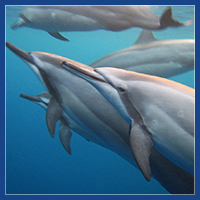 |
| Pictures of Animals: The main page for animal pictures and photos with an overview of them all. | Pictures of Dolphins: Great photos of different kinds of dolphins, the bottlenose dolphin, the spotted dolphin etc. |
 |
|
| Animal Facts: The main page for all the pages with animal facts, with an overview to make it easy for you to find what you are looking for. |

Back to the top of this page about Bottlenose Dolphin Facts
Visit Homepage
| site search by freefind |
Hot pages right now:
Free Christmas borders
Free Christmas Clipart
Christmas Tree Clipart
Christmas Silhouettes
Christmas Clipart
Christmas Coloring Pages
Christmas Cards
Winter Clipart
Fall Clipart

Umbrella Clipart
Snowman Clipart
Horse silhouettes
Victorian Silhouette
Bird Pictures
Space clip art
Koi Fish Drawings
Penguin clip art
Butterfly Clipart
Dinosaur Clip Art
Animal clip art
Tiger Clipart
